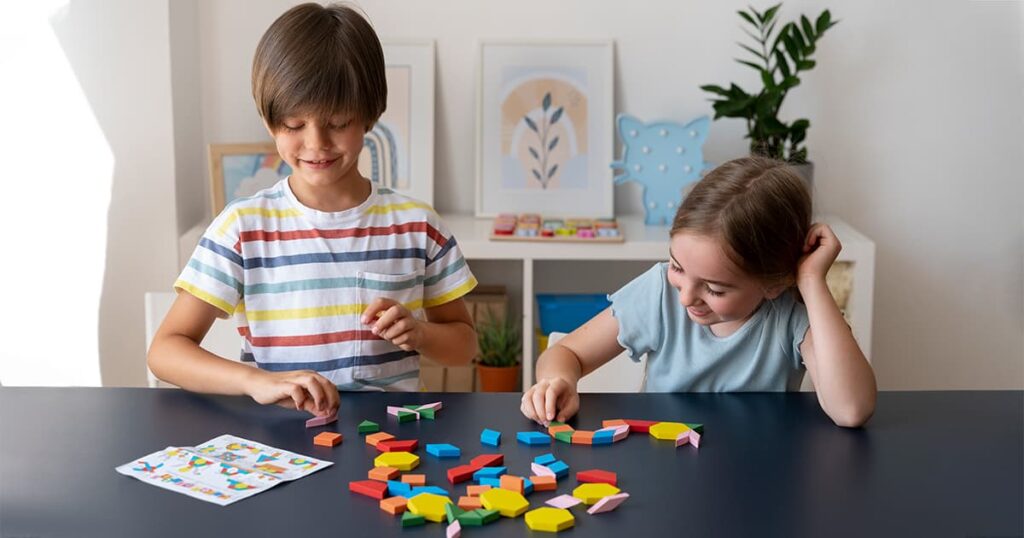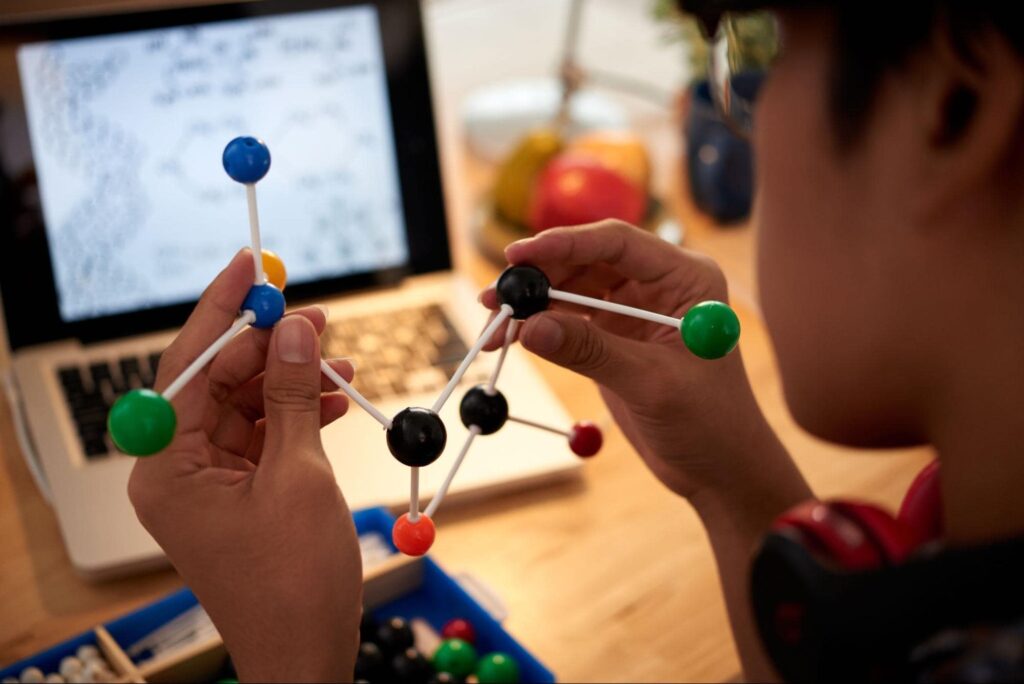While the education landscape expands daily, a lot of institutions still lag behind. This becomes clear as many educators see students zone out mid-lecture or fail classes because of outdated teaching methods.
The solution to that issue might be simpler than you expect. Several studies have shown that students understand concepts more thoroughly by actively engaging in the learning process. One of the best ways to do that is through applying game-based learning—i.e. using games as learning tools. Under a game-based learning framework, students master the subjects they are taught, and they have fun doing it, too!
In this article, we will cover everything about game-based learning, from what it is and why it’s so effective, to how you can implement it as a teaching method.

What Is Game-Based Learning?
Game-based learning is an education model in which students learn new concepts as well as test their knowledge through playing games, both digital and physical. Alongside regular lectures, instructors provide games for their students that help them master what they’ve been taught in a fun and engaging way.
It’s worth noting that game-based learning isn’t limited to K-12 education. In fact, educational games can be just as effective for college students and working adults as well.
Game-Based Learning vs Gamification
If you’ve heard about gamification of learning, you might be wondering if it’s the same as game-based learning. While they might appear similar, there are a few differences to note, as we will see below:
- Gamification of learning is about adding game-like elements to regular classroom activities, such as setting up a reward system for each correct answer. This approach relies on gamifying regular teaching and learning methods to make them more fun and engaging for students. Some good examples of platforms that use gamification of learning are Duolingo and Kahoot!.
- Game-based learning on the other hand is an educational model in which students learn through playing games. As such, students learn the concepts their instructor teaches them and practice them in creative ways. This model focuses on students’ understanding, knowledge retention, and eventually, mastery of course material. Educational games like Kerbal Space Program and A Slower Speed of Light are great examples of a game-based learning model.
What Are the Benefits of Game-Based Learning?
A question you might be asking yourself is: why would you want students to play games instead of studying textbooks? As is the nature of any repetitive task, reading textbooks and attending lectures alone may pose an increased risk of burnout in students. One of the best ways to combat this is by adding elements of fun and hands-on learning activities.
Games and learning work so well together in a game-based learning model because they:
- Make the learning process more fun and enjoyable: Games can turn the most boring aspects of learning, like repetitive memorization, into exciting adventures and challenges. Moreover, most people have lots of fun playing games, so why not incorporate them into the learning process to make it just as enjoyable?
- Promote active learning and critical thinking: In many games, players must navigate vast worlds or think critically to achieve certain goals. In an educational context, this engaging and challenging gameplay encourages students to actively learn new concepts and apply critical thinking skills to achieve these goals.
- Encourage true understanding and mastery of subjects: When a game tests students’ knowledge, it usually encourages them to think outside the box. For example, in the famous game Variant: Limits, students use their calculus knowledge in innovative ways to complete puzzles and explore new areas in the game.
- Help students learn more quickly: Incorporating reward systems in educational games makes it easy for students to keep up their learning momentum as they play. By providing positive reinforcement, students learn faster and complete more assignments in a shorter amount of time.
- Help students retain what they’ve learned: In order to find solutions to problems and questions in educational games, students must actively recall the concepts they have learned. This process reinforces their memory and helps them retain the knowledge they acquire.
- Give immediate feedback on mistakes and explain how to correct them: In many educational games, making a mistake might lead to immediate failure. However, these failures are not entirely negative, as students also receive feedback on their in-game performance as well as advice for improvement. Moreover, many games offer second chances to players. As a result, students lose their fear of failure; instead, they grow curious and start experimenting with new ideas.
- Are more effective for neurodivergent students: Many neurodivergent students struggle with traditional instruction material, which often fails to accommodate their needs. Thankfully, educational games help them apply their creative thinking patterns without most of the hardships they face in traditional studying methods.
- Increase average grades and passing rates: Several studies have shown that students who learn through game-based learning tend to achieve higher average grades than students in traditional learning programs. Rather than just aiming to pass exams, students can strive to achieve the highest scores possible.

7 Tips for Implementing a Game-Based Learning Model
We’ve talked about why game-based learning is so effective for students. Now, let’s discuss how you can use games to make the learning experience more impactful for your students.
1. Know Your Students’ Needs, Strengths, Weaknesses, and Habits
Before you get started, you need to get to know your students. Similarly to customer personas in marketing, you can build a persona based on the average performance of your students in a course. This persona will help you identify which areas of learning to focus on and also which games will work best for your students. However, you should keep in mind that each student will have their individual needs, strengths, weaknesses, and learning habits. So how can you balance between the requirements of the student body as a whole and addressing individual needs effectively?
The answer is quite simple. All you have to do is define the criteria on which you’re basing your analysis for the personas. To illustrate a student’s persona, focus on the following points:
- Attention spans,
- Average grades, and
- How detailed their answers are in quizzes.
In terms of individual students’ needs, you can document any medical conditions or disabilities that affect their learning. Beyond that, try to assess each student’s learning habits as some learners rely on visual or audio material, while others prefer hands-on learning.
2. Select the Right Game Type
Now that you understand your student’s needs and capabilities, it’s time to pick the best types of games that suit them. There are numerous ways to classify games, but below are the most common types:
- Puzzles: Puzzles are not just entertaining on their own; they are also excellent tools for improving students’ cognitive skills. You can use various puzzles to enrich your game-based curriculum, such as word games, jigsaw puzzles, and more.
- Board/card games: Classic board games can also boost students’ cognitive skills in several ways. You have the option to choose popular games like Scrabble or create your own; either way, your course will become an active learning experience.
- RPGs: RPGs (role-playing games) are games in which each player assumes a role in a story or scenario. These games can suit any learning program that relies on storytelling, like history and creative writing. For example, the History Quest series teaches elementary school kids all about history whilst immersing them in ancient cultures via role-playing and other such activities.
- Video games: Many people may not be aware that video games can help develop important skills like critical thinking and even hand-eye coordination. Some educational video games even focus on specific subjects, such as calculus and aerodynamics (e.g. Variant: Limits and Kerbal Space Program respectively).
- Physical games: These are games that require some degree of physical activity. Games like Simon Says and Duck Duck Goose are common among children; others such as charades and treasure hunts can suit adults as well. By using these games in a learning program, you help students reinforce their long-term memory and get some exercise along the way.
- Simulations: Simulations are powerful tools to add to your curriculum. They are most useful in practical courses and training programs, but they work great for theory courses as well. Flight Simulator is a great example of a simulation game tailored for a training course.

3. Customize Game Difficulty Based on Your Students’ Skill Levels
Many games, especially digital ones, contain different difficulty levels that determine how challenging the game will be for players. These levels usually follow the standard scale of easy-normal-hard. But why do games operate on several tiers of difficulty in the first place?
Not all students are equally skilled or able to master difficult topics at the same rate. On the contrary, many students may struggle with understanding certain concepts or learning at different paces.
In a game-based learning model, setting different difficulty levels in an educational game caters to students’ different levels of understanding, allowing them to apply their knowledge effectively. For example, a course on DNA and RNA will be more difficult and advanced than an introduction to the animal kingdom. In such a case, the difference in difficulty must be taken into account when adjusting the levels of a biology game for students.
4. Design a Reward System to Motivate Students
No game is complete without some sort of reward or achievement system! Besides motivating them to work harder (or smarter), rewards can also keep students interested in the course material.
You can create a reward system yourself or use the one that the game provides. Some common reward items include competition points, rare collectibles (in video games), pocket money, and candy.
In all cases, try to match the rewards with students’ efforts, not their results. Some students may not reach the right answer because of a lapse in memory, for example, so their efforts should not be discredited.
5. Introduce an Element of Competition
One of the best ways to motivate students is by introducing competition in some form. Whether they are racing against the clock or trying to achieve the highest score, many students find competition quite motivating.
The drawback here is that such a fast-paced environment may be stressful for some people. While some students may work better with competition, others may actually fall behind due to stress or anxiety. So, as a rule of thumb, only introduce formal competition in your course as long as it does not hinder students’ performance.

6. Provide Immediate Feedback After Game or Level Completion
When finishing a level in a game, players should get immediate feedback on their performance. In an educational context, the scope for feedback is much broader. Let’s say you are teaching a course in conversational English and using a role-playing game to test your students’ conversation skills. You can give your students feedback after every conversation, exchange, or sentence as needed. This way, you can catch mistakes and correct them immediately, thus encouraging them to remember the right answer.
One thing to note here is that some people can be sensitive to criticism. In an effort to accommodate them, you can:
- Frame feedback around the specific task or concept the student is working on.
- Offer a balance of positive reinforcement and constructive criticism.
- Consider individual learning styles when possible.
7. Monitor How Students Interact with the Game
The final step here is to analyze the game’s impact on your students’ learning, understanding, and memorization. You may notice new trends in their performance after implementing the game-based learning model. If so, make sure to monitor these trends so you can refine the curriculum as needed.
Consider these key questions as a starting point for your analysis:
- Do the students truly understand the course material through the game? Can they apply their knowledge in real life?
- Which parts of the learning process have students improved at the most by playing the game?
- If the game is digital, is it polished and free of bugs?
Answering these questions can help you figure out how well the game-based learning model is working for your students.
Final Thoughts
It’s never too late to change the way students learn new concepts and apply their knowledge. Thanks to game-based learning, students now have much better chances of mastering subjects than ever before. Game-based learning is also quite flexible, accommodating learner’s needs and preferences.
So, if you have yet to give game-based learning a try, the time is now! It can be a big change, but the results you will see in your students’ understanding and mastery of the learning materials are well worth the effort invested.
.
Read More
7 Engaging Elearning Gamification Strategies

